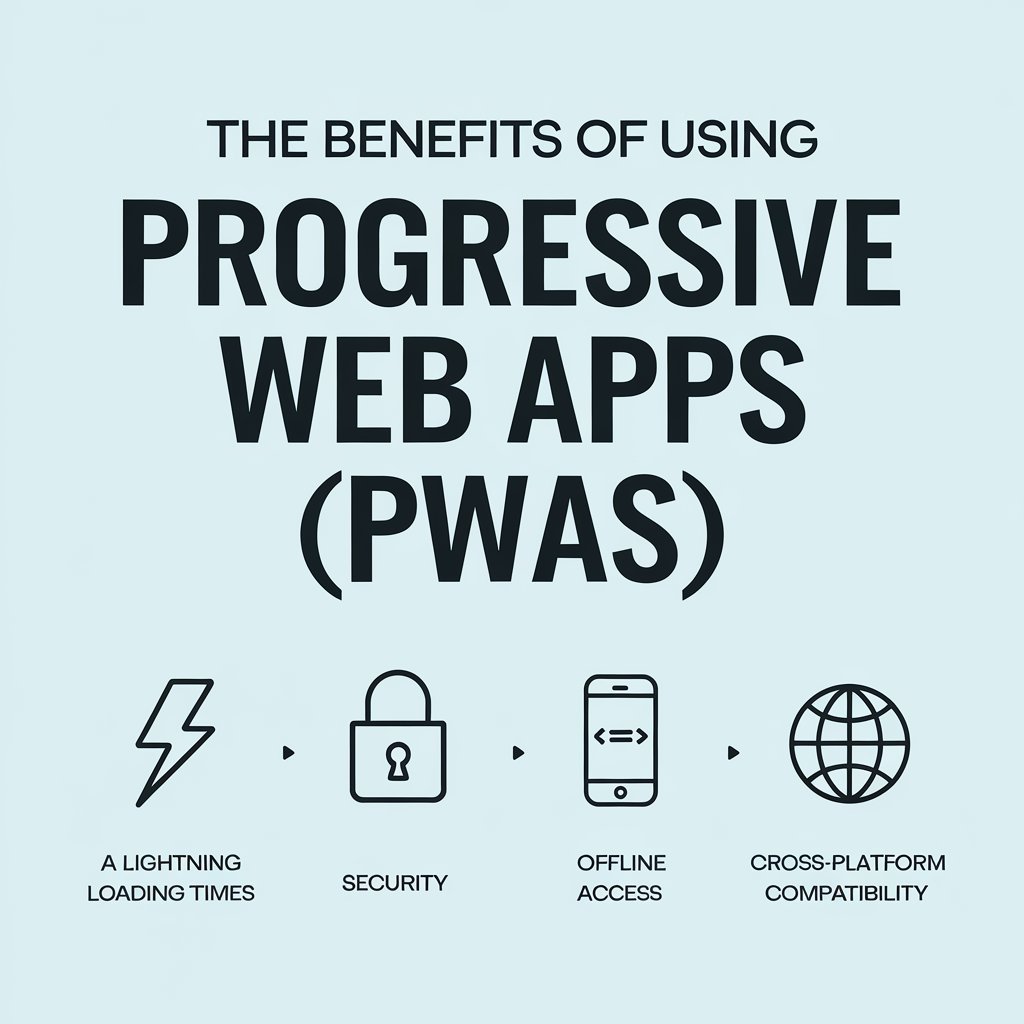
The Benefits of Using Progressive Web Apps (PWAs)

The Benefits of Using Progressive Web Apps (PWAs)
In the ever-evolving world of web development, Progressive Web Apps (PWAs) are gaining momentum as a key solution for providing users with a fast, reliable, and engaging web experience. PWAs blend the best of web and mobile apps, delivering a seamless user experience across devices and platforms. They are a game-changer for businesses looking to enhance their online presence without the complexity and cost of developing native apps. In this blog, we’ll explore the benefits of using PWAs and why they’re becoming the future of the web.
1. Faster Load Times and Offline Access
One of the key advantages of PWAs is their ability to load quickly, even in poor network conditions. Thanks to caching and service workers (scripts running in the background), PWAs can pre-load content and assets, allowing users to interact with the app even without a stable internet connection. This provides an app-like experience where users can access previously loaded content offline.
Benefits for Users:
- Improved user experience, especially in areas with slow internet or frequent network disruptions.
- The ability to interact with key features of the app without needing an internet connection.
Example: Think of an online store or news website that allows users to browse product listings or read articles offline after they’ve been cached.




2. Enhanced Performance and User Engagement
PWAs are designed with speed and performance in mind. Since they load progressively, users don’t have to wait for an entire website to download before interacting with it. PWAs use lightweight files and optimize loading speeds, which can lead to better user retention and satisfaction.
Additionally, PWAs can send push notifications just like native apps, which is a great way to re-engage users by notifying them about updates, offers, or important events.
Benefits for Businesses:
- Faster load times can reduce bounce rates, especially on mobile devices.
- Push notifications increase user engagement and can lead to higher conversions.
Example: An e-commerce site using PWAs can send timely notifications about discounts, cart reminders, or new arrivals, directly driving more sales.
3. Cross-Platform Compatibility
A key benefit of PWAs is their ability to work on any platform that uses a standards-compliant browser. This means a single PWA can run on desktops, tablets, and mobile devices without requiring separate codebases for different platforms. For businesses, this reduces the complexity and cost of maintaining multiple apps for iOS, Android, and web.
Benefits for Developers:
- A single codebase for all platforms reduces development time and maintenance costs.
- Automatic updates across devices without needing approval from app stores.
Example: Twitter Lite is a great PWA success story. Instead of building separate apps for every platform, Twitter used a PWA that performs efficiently across all devices, leading to higher engagement and more frequent use, especially in regions with slower internet speeds.
4. No App Store Dependencies
One of the pain points of developing traditional mobile apps is the requirement to publish them through app stores like Google Play or Apple’s App Store. This process can be time-consuming and may involve paying developer fees or dealing with app store policies.
With PWAs, there’s no need to submit your app to an app store. Users can simply visit the website and, if they choose, install the PWA directly from their browser to their device’s home screen. This saves time and eliminates the need to wait for app store approvals.
Benefits for Businesses:
- No waiting for app store reviews and updates—deploy new versions instantly.
- Bypass app store commissions or fees.
Example: Spotify’s PWA allows users to stream music without the need to download the app from a store, giving Spotify more control over their platform and the user experience.
5. Cost-Effective Development
Developing and maintaining native mobile apps can be costly, especially for businesses that need to support multiple operating systems. In contrast, PWAs allow businesses to create a web-based application that provides a mobile-app experience without the high development costs.
Benefits for Businesses:
- Lower development and maintenance costs compared to native apps.
- A faster time-to-market since PWAs are built on the web, which developers are often already familiar with.
Example: A startup can develop a single PWA instead of separate apps for Android, iOS, and web. This not only reduces the initial development cost but also the long-term maintenance expenses.
6. Improved SEO and Discoverability
Unlike native apps, PWAs are indexed by search engines, which means they can be found via Google or other search platforms. This gives businesses the opportunity to drive more organic traffic to their PWAs, something that native apps miss out on since they are only searchable within app stores.
Additionally, since PWAs are lightweight and fast-loading, they contribute positively to user experience metrics that Google uses for search ranking, like mobile performance and site speed.
Benefits for SEO:
- Increased visibility on search engines.
- Enhanced user experience signals that can boost search engine rankings.
Example: By deploying a PWA, a blog or news website can increase organic traffic by offering a fast, responsive experience that keeps users engaged.



